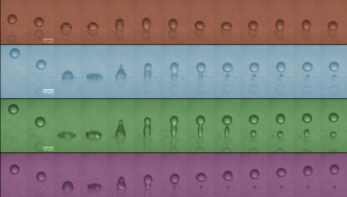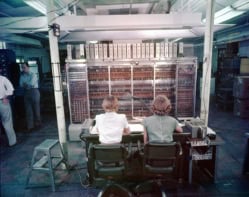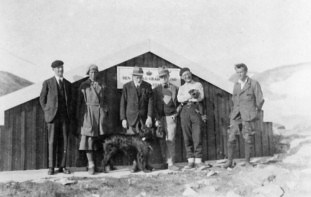Point your Web browser at http://www.agacooker.com/disc.html and you will learn how Gustav Dalen, the Swedish inventor who won the Nobel Prize for Physics in 1912, invented the Aga cooker to release his wife from some of the drudgery of cooking. Dalen only realized that his wife was “virtually enslaved” in the kitchen after he was blinded by an explosion in his laboratory and had to spend much of his time at home. Ironically, Dalen had received the prize for his work on lighting beacons and light buoys: this involved developing techniques to store large volumes of acetylene (dissolved in acetone) in a porous mass, the “aga”, at high pressures. Not all discoveries involve such misfortune – nor lead to such desirable status symbols as Aga cookers – and few are so easily identified with one person or academic discipline. The World Wide Web is a case in point. It was developed by a British physicist in 1990. Actually, it was developed by a British physicist working as a computer programmer at CERN, a particle physics laboratory funded by 19 or so nations in Europe, in collaboration with a Belgian computer scientist at CERN. And it only really took off following the development of Web browsers by two researchers at the University of Illinois at Urbana-Champaign in 1993. But few discoveries are even as clear-cut as the Web. Indeed it is now widely accepted that the path from a discovery in basic research to a profitable product is long and complex. The feature articles in this issue looks at some of the physics involved at different points along this path. The articles are not concerned with discoveries such as the transistor or the laser (or the Web or Aga cooker), but with on-going product and process improvements in the oil, glass and car industries.
Peter King of BP Exploration summarizes the array of techniques used to improve the productivity of oil and gas fields. These include the application of abstract techniques from statistical physics to, for example, maximize profitability or predict the flow of fluids in reservoirs. John Bradshaw of Pilkington looks at car windscreens. Car companies have to take a variety of factors into consideration when designing a window – its strength and resistance to impact, its optical properties and its visual appearance being three of the most important – and must also make sure that the windscreen can be manufactured as efficiently as possible. Challenges for the future include integrating all manner of antennae and electronics into the screen. Windscreens figure large in the work of Gary Strumolo and Viswanathan Babu of Ford. They explain the advantages of the “virtual wind tunnel” that simulates the flow of air over a car: a physical model of the vehicle is no longer needed and the simulations provide more information than even the best-instrumented experiments. As Strumolo and Babu say: “once you know the flow around a car, you can predict everything from its fuel efficiency and handling characteristics to the noise that the passengers can hear inside.” The problem is that you need to know about face-centred hypercubes in four-dimensional spaces.
Charles Duke of Xerox Corporation looks at the bigger picture for physicists working in industry. It is important to realize, he writes, that no single model can be applied to R&D, and that the “big bang” and “big brother” models in particular – the models that most physicists know best – are no longer valid. At Xerox “commercial value rather than technical novelty or elegance is rewarded”.
Even computer games companies have been turning to physics – as in the laws of motion rather than warp-drive adventures in hyperspace – to make their games more realistic. Indeed, in the real and virtual worlds there are still plenty of opportunities for physicists who are willing to get their hands dirty and tackle problems in what are not usually considered to be physics-based industries.



